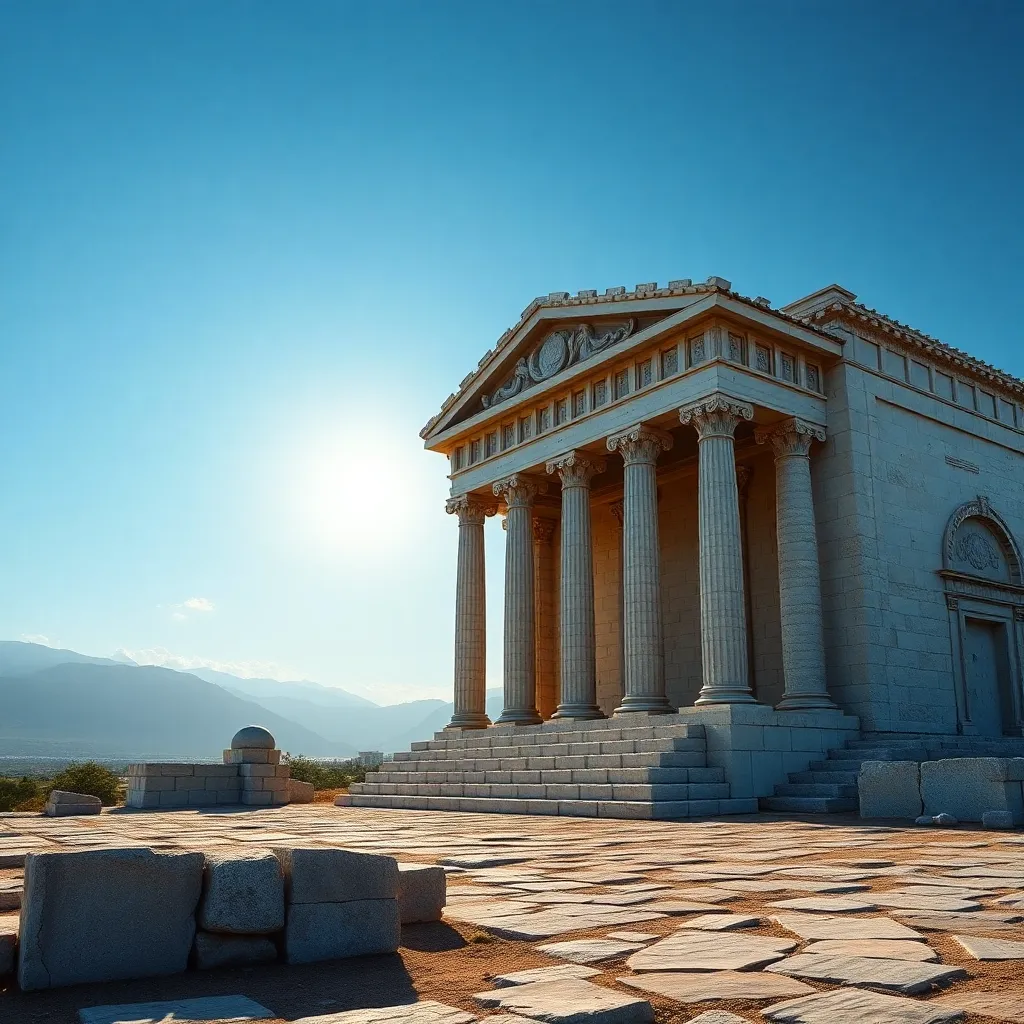The Temples of Hephaestus: Architectural Marvels of Ancient Greece
I. Introduction
Hephaestus, the Greek god of craftsmanship, fire, and metalworking, holds a significant place in Greek mythology. Often depicted as a skilled artisan, he is credited with creating magnificent weapons and armor for the gods and heroes. Temples dedicated to Hephaestus served not only as places of worship but also as monuments to the artistry and engineering prowess of ancient Greek civilization.
The significance of these temples in ancient Greek culture cannot be overstated. They were symbols of the reverence the Greeks had for craftsmanship and the artisans who shaped their world. This article aims to explore the architectural features and historical context of the temples of Hephaestus, highlighting their importance in both ancient and modern times.
II. Historical Context of Hephaestus Worship
The origins of Hephaestus in Greek mythology are rich and multifaceted. According to myth, he was born to Hera, who cast him from Olympus due to his physical deformities. Despite this, Hephaestus rose to become one of the most revered gods, associated with fire and craftsmanship.
In ancient Greek religion, Hephaestus played a crucial role as the protector of artisans, blacksmiths, and craftsmen. His worship was widespread, particularly among tradespeople who relied on his blessings for success in their work.
Key festivals and rituals were dedicated to Hephaestus, including:
- The Hephaestia, a festival celebrated in his honor with games, sacrifices, and communal feasts.
- Processions to his temples, where offerings were made to seek his favor.
- Craftsmen’s gatherings celebrating their skills and the importance of their trade.
III. Architectural Features of Hephaestus Temples
The architectural styles of Hephaestus temples reflect the grandeur and sophistication of ancient Greek architecture. These structures often incorporated various elements typical of Greek temple design:
- Doric, Ionic, and Corinthian elements: Many temples utilized the Doric style, characterized by sturdy columns and a simple design, while others incorporated more ornate Ionic and Corinthian features.
- Use of materials: Temples were primarily constructed from durable materials such as marble and limestone, showcasing the skill of the builders.
The layout and design elements of Hephaestus temples typically included:
- Colonnades: Rows of columns providing support and enhancing aesthetic appeal.
- Altars: Dedicated spaces for sacrifices and offerings to the god.
- Sanctuaries: Inner chambers housing the cult statue of Hephaestus.
- Integration of sculptures and friezes: Temples often featured intricate carvings that depicted myths and symbols associated with Hephaestus.
IV. The Temple of Hephaestus in Athens
The Temple of Hephaestus, also known as the Hephaisteion, is one of the best-preserved ancient temples in Greece. It was constructed around 449-415 BCE, during the height of Athenian power. Located in the Agora of Athens, the temple served as a focal point for worship and community gatherings.
Architecturally, the temple is significant for its use of the Doric order and its harmonious proportions. The building is notable for its:
- Peripteral design: Surrounded by a single row of columns, enhancing its grandeur.
- Rich decorative elements: Including a frieze depicting the labors of Heracles and scenes from the Trojan War.
Additionally, the temple features various inscriptions that honor Hephaestus and celebrate the skills of artisans. These inscriptions provide valuable insights into the cultural and religious life of ancient Athens.
V. Other Notable Temples of Hephaestus
While the Temple of Hephaestus in Athens is the most famous, several other temples dedicated to Hephaestus exist, albeit in lesser-known locales. These temples often reflect regional architectural styles and cultural significance:
- The Temple of Hephaestus at Olympia: A smaller structure, showcasing local craftsmanship and dedication to the god.
- The Temple of Hephaestus in Aegina: Features a unique blend of Doric and Ionic elements, emphasizing the city’s importance in maritime trade.
Comparative analysis of these temples reveals variations in architectural styles and features, illustrating the diversity of Hephaestus worship across different regions. Each site holds cultural importance, often serving as community centers for artisans and craftsmen.
VI. Archaeological Discoveries and Restoration Efforts
Numerous archaeological discoveries have uncovered the remnants of Hephaestus temples, providing insights into their historical context. Excavations have revealed:
- Artifacts associated with worship, such as pottery and offerings.
- Remains of altars and sacrificial sites, shedding light on rituals performed in honor of Hephaestus.
However, challenges in preserving and restoring these ancient structures persist. Factors such as natural erosion, urban development, and pollution threaten their integrity. Restoration efforts are often complicated by the need to balance modern safety standards with historical accuracy.
Modern technology, including 3D scanning and digital modeling, has greatly enhanced archaeological studies, allowing researchers to visualize and reconstruct these ancient sites with greater precision.
VII. The Legacy of Hephaestus Temples in Contemporary Culture
The influence of Hephaestus temples extends beyond ancient history, impacting modern architecture and design. Elements of classical Greek architecture can be seen in contemporary buildings, reflecting a lasting appreciation for symmetry and proportion.
Moreover, Hephaestus temples serve as symbols in art and literature, representing the enduring legacy of craftsmanship and creativity. They inspire artists, writers, and architects to draw upon the rich mythology associated with Hephaestus.
Today, these ancient sites hold significant touristic and educational value. Visitors are drawn to the historical and architectural marvels of Hephaestus temples, providing opportunities for cultural exchange and appreciation of ancient Greek heritage.
VIII. Conclusion
In conclusion, the temples of Hephaestus stand as remarkable testaments to the historical and architectural importance of ancient Greek civilization. They embody the reverence for craftsmanship and the artistry that defined an era.
The enduring legacy of these temples invites further exploration and appreciation, reminding us of the intricate connections between mythology, architecture, and culture. As we reflect on the achievements of ancient Greek craftsmanship, we are inspired to recognize and celebrate the artistry present in our contemporary world.




